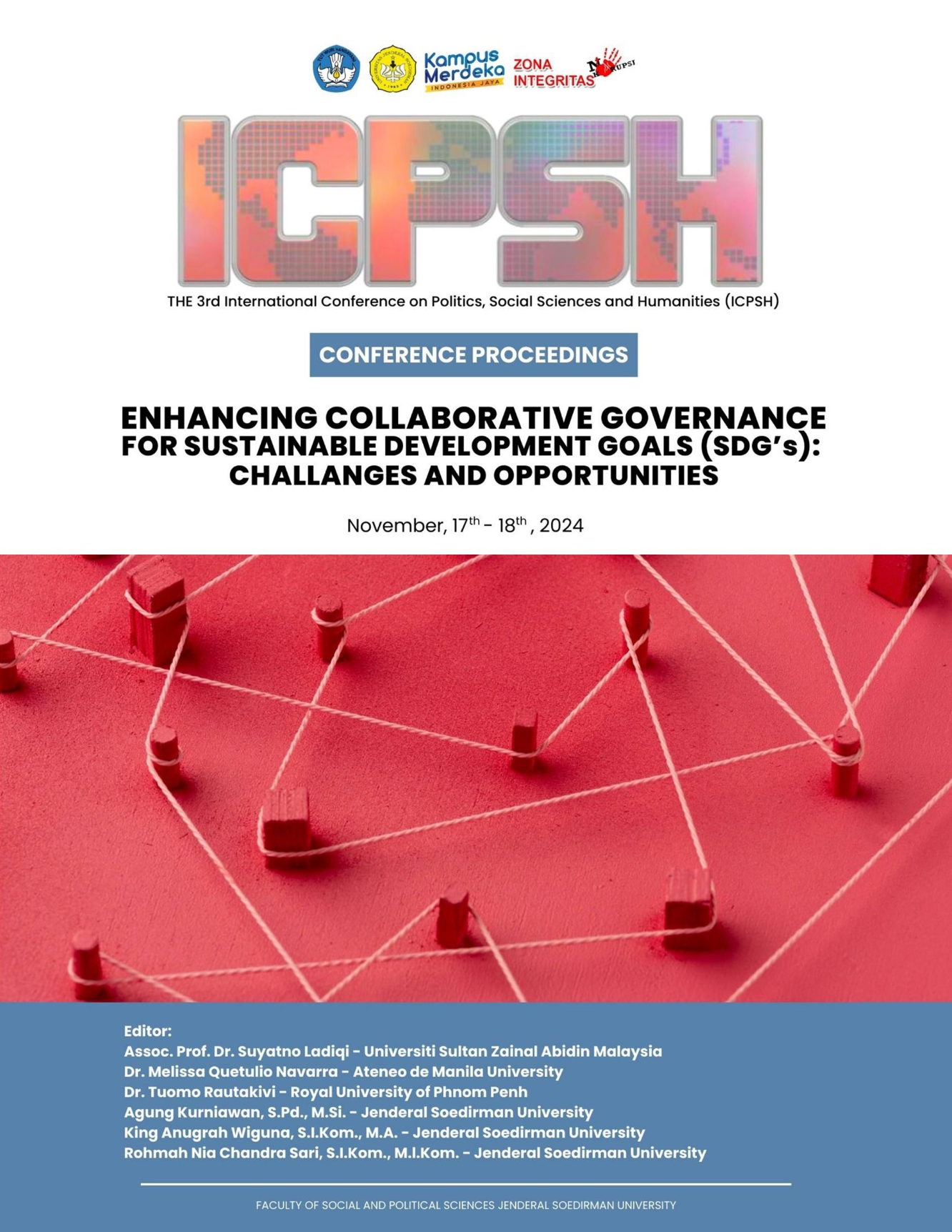Collaborative Governance Policy For Development of National Strategic Projects in The Field of Infrastructure in The Banten Province: Case Study of Construction of The Sindangheula Dam in Serang District and The Karian Dam in Lebak District
Abstract
Banten Province has two dams, namely the Sindangheula Dam and the Karian Dam, which are two national
strategic projects in Banten Province as stated in Presidential Regulation Number 3 of 2016 concerning the
acceleration of the implementation of national strategic projects, that in the context of accelerating the
implementation of strategic projects to meet basic needs and improve welfare community, efforts need to
be made to accelerate the implementation of national strategic projects. The Sindangheula Dam, which
was built in 2015, is located in Pabuaran District, Serang Regency, was inaugurated in March 2021 by the
President of the Republic of Indonesia Joko Widodo, this dam has the benefit of providing water for Serang
Regency/City and Cilegon City, providing supply needs to the Cibanten Irrigation Area, controlling floods,
water storage, recreational facilities and water tourism destinations, as well as the potential for generating
electrical energy. Meanwhile, the construction of the Karian dam is an effort to fulfill raw water needs and
agricultural needs such as providing water for irrigation. The government hopes that the construction of
the dam can fulfill its main objective as a supplier of water needs in the Banten region and its surroundings.
Apart from meeting raw water and irrigation needs, the construction of the Karian Dam also has several
purposes, namely to deal with flooding problems, as a water tourism destination and the potential for
generating electrical energy. One of the keys to the success of the construction of the two dams is the
implementation of collaborative governance (An-sell and Gash, 2007) as a more holistic and participatory
approach, involving various stakeholders in the decision-making process, as well as creating a more
transparent and accountable ecosystem. Through the use of a qualitative approach, the author matches
social phenomena with applicable theories, and with descriptive methods the author aims to describe and
interpret the research object according to what it is. This project was initiated in October 2015 with an
investment of Rp 1,07 trillion and was implemented by Daelim Industrial Co, LTD-PT. Wijaya Karya
(Persero)-PT. Waskita Karya (Persero) Joint Operation. The project involved the participation of the
Indonesian Div. SDA Barata Indonesia in the project, which included the construction of the Radial Gate, a
major project in Indonesia. The project involved various departments within the Indonesian government,
including Hydromechanics, Telecommunication, Control Operation, and Maintenance Equipment



